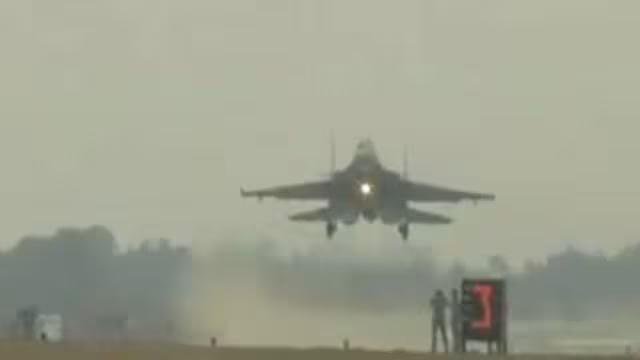
Why is IAF Conducting Fighter Jets’ Landing & Take-off Drill at Ganga Expressway in UP?
In a recent exercise, the Indian Air Force (IAF) conducted take-off and landing drills on the Ganga Expressway in Uttar Pradesh, showcasing its capabilities to use the expressway as an alternative runway during times of war or national emergencies. The exercise, which included fighter jets like Rafale, was a significant demonstration of the IAF’s preparedness and flexibility in responding to various scenarios.
The Ganga Expressway, which spans over 340 kilometers, is the first airstrip on any expressway in India equipped to handle both day and night landings of jets. The exercise was conducted by the IAF’s Western Command, and it involved Rafale fighter jets, which are known for their high-performance capabilities and precision landing systems.
The drill, which was conducted both during the day and night, aimed to assess the expressway’s potential as an alternative runway in emergency situations. The exercise was designed to test the capabilities of the expressway’s infrastructure, including its lighting, navigation aids, and emergency services.
The IAF has been working on developing alternative airfields and airstrips to ensure the country’s air defense capabilities remain robust and adaptable. The Ganga Expressway exercise is a significant step in this direction, as it demonstrates the IAF’s ability to use unconventional surfaces as runways in times of crisis.
The exercise also showcased the IAF’s expertise in conducting operations in challenging environments. The Rafale fighter jets, which are capable of operating in extreme weather conditions, were used to demonstrate the IAF’s ability to conduct take-offs and landings in a variety of conditions.
The Ganga Expressway exercise was also significant because it marked a rare instance of the IAF conducting operations on a civilian infrastructure. The exercise was carefully planned and executed to ensure minimum disruption to the expressway’s normal operations and to minimize the impact on local residents.
The IAF’s exercise on the Ganga Expressway has significant implications for India’s national security. It demonstrates the country’s ability to respond to emerging threats and to adapt to changing circumstances. The exercise also highlights the IAF’s commitment to staying ahead of the curve and to developing new capabilities that can be used in a variety of scenarios.
In addition to its national security implications, the exercise also has economic benefits. The Ganga Expressway is a major infrastructure project that is expected to boost economic growth in the region. The exercise demonstrates the IAF’s willingness to work with civilian authorities to ensure that national security interests are aligned with economic development goals.
The IAF’s exercise on the Ganga Expressway is a significant development in India’s aviation history. It marks a new chapter in the country’s ability to use unconventional surfaces as runways and to respond to emerging threats. The exercise demonstrates the IAF’s commitment to staying ahead of the curve and to developing new capabilities that can be used in a variety of scenarios.
In conclusion, the IAF’s exercise on the Ganga Expressway is a significant demonstration of the country’s ability to respond to emerging threats and to adapt to changing circumstances. The exercise highlights the IAF’s commitment to staying ahead of the curve and to developing new capabilities that can be used in a variety of scenarios. As India continues to develop its infrastructure and to strengthen its national security capabilities, exercises like these will play an increasingly important role in ensuring the country’s safety and security.






